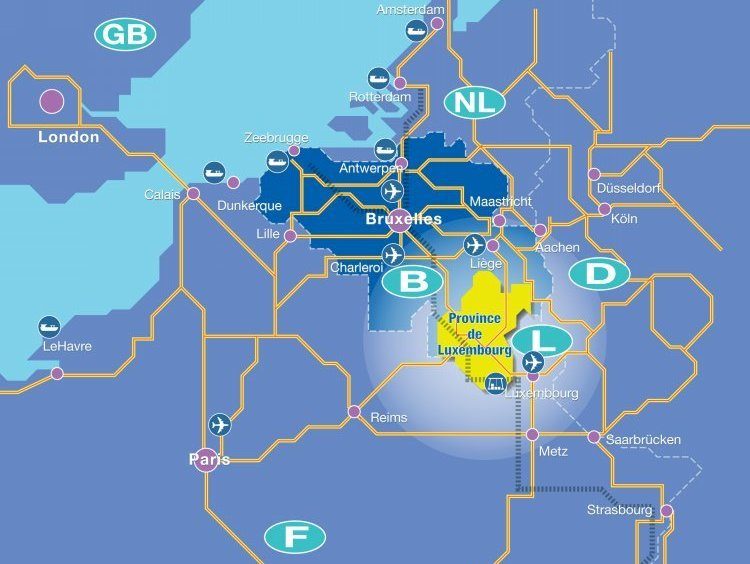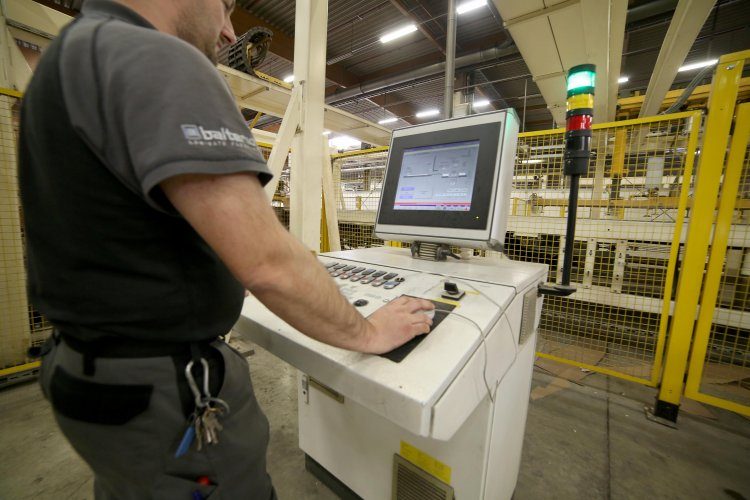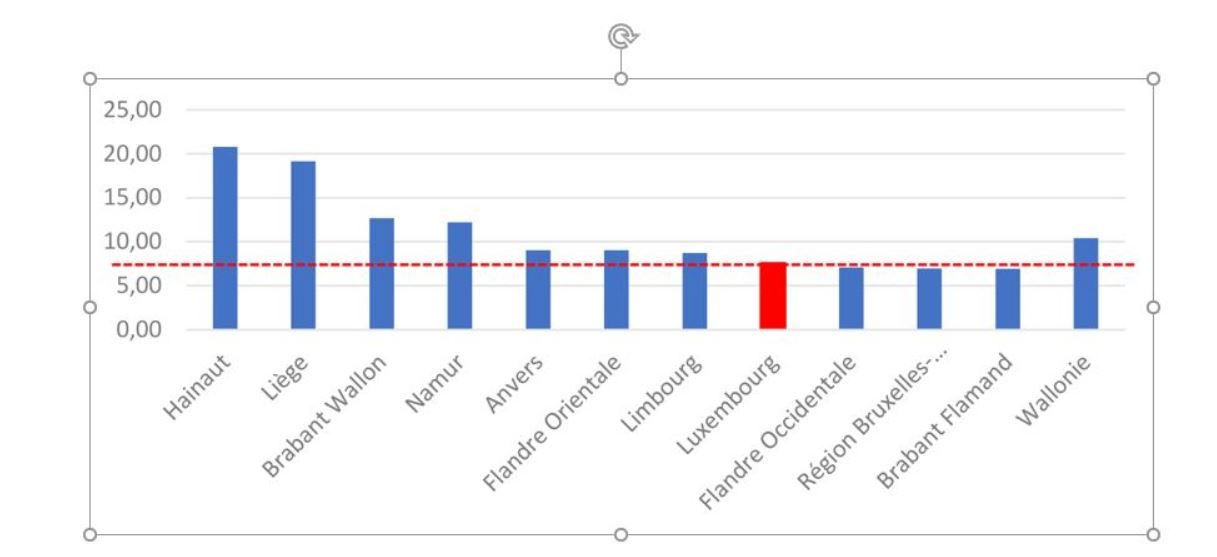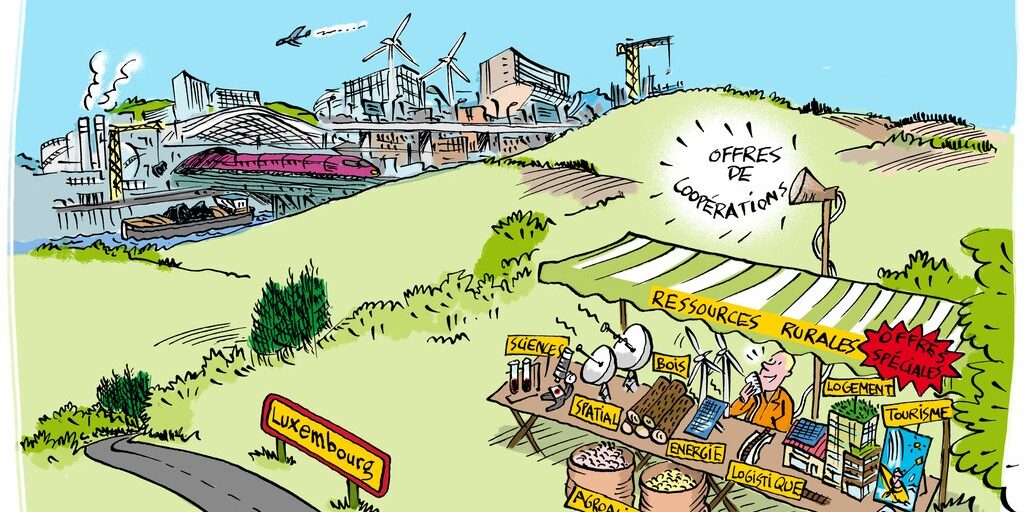Experience the advantages of an enterprising region! Belgian Luxembourg boasts a strategic location within the European economy, an extremely active economic life, a relaxed social climate and an excellent quality of life. Four good reasons to invest there: you would be well located, you are in good company, the workforce is very cooperative and the region is pleasant! What else?
Reason 3 : relaxed social climate
REASON 1: A STRATEGIC LOCATION WITHIN THE EUROPEAN ECONOMY
The province of Luxembourg enjoys a privileged location in Europe.
It gives access to more than 58 million consumers within a maximum distance of 4.5 hours by lorry.
Belgium is the third best location to set up a distribution centre.
Belgian Luxembourg offers:
- a key position as an interface between Brussels, Liège, Luxembourg and the French Moselle region,
- a location close to major decision-making centres: Brussels, Luxembourg, Paris, Munich, London…
- proximity to a vast market of some 58 million consumers (broad access to the markets of the Greater Region, which also includes Germany (120 kilometres of border shared with the Grand Duchy of Luxembourg and 110 kilometres with France)
- proximity to major North Sea ports: Antwerp, Zeebrugge, Rotterdam (via the Athus Container Terminal Belgium’s largest dry port)

Belgian Luxembourg is served by three major roads: the E 411 motorway (Brussels-Luxembourg-Strasbourg-Basel-Milan route), the E 25 motorway (Cologne-Liège-Luxembourg route), and national highway 4 (Brussels-Luxembourg route). It is served by the Brussels-Luxembourg, Liège-Luxembourg and Athus-Meuse railway lines.
4 airports nearby: Brussels South Charleroi Airport (BSCA) – Brussels Airport (Zaventem) – Liège Airport (Bierset) – Luxembourg.
REASON 2: EXTREMELY ACTIVE ECONOMIC LIFE
Some big names in industry have a presence in Belgian Luxembourg: L’Oréal, Ferrero, Federal Mogul, Jindal Fims, Burgo Ardennes, Spanolux, IBV, Fruytier, Ter Beke, Saint-Gobain, Vitrociset, Thomas&Piron and others…
The region boasts a remarkable fabric of well-established local businesses.
2.1 PRODUCTIVITY ABOVE THE EUROPEAN AVERAGE
One of the highest work motivation levels in the world explains the enviable position occupied by Belgian productivity.
2.2 FLEXIBLE SOCIAL LEGISLATION
- Legal working hours in Belgium: 40 hours a week maximum.
- Collective bargaining agreements limit it to 38 hours a week.
- The relaxed social climate and a consensus between social partners have made it possible to relax the legislation to allow longer working time on a voluntary basis.
2.3 AN AVAILABLE, SKILLED AND MOBILE WORKFORCE
Belgian Luxembourg is at the centre of a vast area called the Greater Region (Saarland, Rhineland-Palatinate (Germany), Lorraine (France), Grand Duchy of Luxembourg and Wallonia (Belgium). The Greater Region has some of the highest cross-border labour flows in Europe: around 213,000 people cross a border every day to work.

2.4 A FAVOURABLE SOCIO-ECONOMIC CONTEXT
- A constantly growing population: the province had 284,638 inhabitants as at 01/01/2019 with a population growth of 14.75% between 2000 and 2018 (8.53% in Wallonia)
- A young population: 24.3% under 20 years of age (compared to 23.1% in Wallonia) as at 01/01/2019
- An employment demand rate (8.8%) lower than the Walloon rate (12.9%) in January 2020
- Timber industry: more than 1,397 companies and professionals linked to the timber industry, for a total of around 3,800 jobs (according to ECB 2017 statistics)
- Food industry: 2,076 positions (source: REAL (Luxembourg Province Study and Analysis Network) Socio-Economic Dashboard, January 2019)
- Life Sciences: 10 “public centres for the production of scientific knowledge”: 120 researchers and 300 jobs in total
- Space: presence of the ESA station, the leading European control centre specialising in in-orbit testing (the only site for Galileo), and Galaxia Park dedicated to space applications.
REASON 3: A RELAXED SOCIAL CLIMATE
Belgian Luxembourg is renowned as an area of social and political consensus. The number of strike days is particularly low and the absenteeism rate due to accidents and illness is lower than the national average.
A SERENE SOCIAL CLIMATE
(source: ONSS 2016)
REASON 4: EXCEPTIONAL QUALITY OF LIFE
Belgian Luxembourg is recognised as a province where life is good thanks to its balance between business and rurality, its tourist attractions and the preservation of nature and its renowned cuisine, which doesn’t hurt!
BONUS: THE PROVINCE OF LUXEMBOURG IN A FEW KEY FIGURES

- The largest province in Wallonia: 4,400 km², i.e. 26.4% of Walloon territory
- 44 municipalities, 7of which are home to more than 10,000 inhabitants, representing 40% of the province’s population
- 80,364 salaried jobs as of 30 June 2018 (National Office of Social Security – decentralised statistics – IWEPS (Walloon Institute for Evaluation, Forecasting and Statistics) calculations)
- 8 out of 10 companies employ fewer than 10 people (as in Wallonia), and companies with more than 100 workers (representing less than 2% of places of business) account for more than 33% of salaried jobs in the province
- 23,207 self-employed persons, including 7% carers as at 31/12/2018 (source: INASTI (National Institute of Social Insurance for Self-employed Persons))
- 35,890 residents of the province were working in Luxembourg as at 29/03/2019:
- e. 73% of residents in Belgium working in the Grand Duchy of Luxembourg
- or 28% of the province’s economically active population
- nearly 60% of the working population of the Arlon district is employed in the Grand Duchy of Luxembourg (source: Centre commun de la sécurité sociale du Grand-Duché de Luxembourg (Joint Social Security Centre of the Grand Duchy of Luxembourg)/Forem (Community and Regional Office for Vocational Training and Employment)
- 231,650 hectares of woodland, i.e. 33% of the Walloon area (source: REAL (Luxembourg Province Study and Analysis Network) Socio-Economic Dashboard, January 2019)
- The province of Luxembourg remains the most popular province for tourists in Wallonia with 2,417,871 overnight stays in 2017, i.e. 31.4% of Walloon overnight stays. The Municipalities of Durbuy and Vielsalm are first and third respectively in the rankings of Walloon municipalities in terms of the number of overnight stays in tourist accommodation establishments, with 408,829 and 302,322 overnight stays. Together, they account for nearly 10% of overnight stays in Wallonia and 30% of those in the province of Luxembourg (source: SPF (Federal Public Service) for the Economy – Statble/IWEPS (Walloon Institute for Evaluation, Forecasting and Statistics) calculations))
- Bastogne is also the second most visited city by Americans after Brussels.









